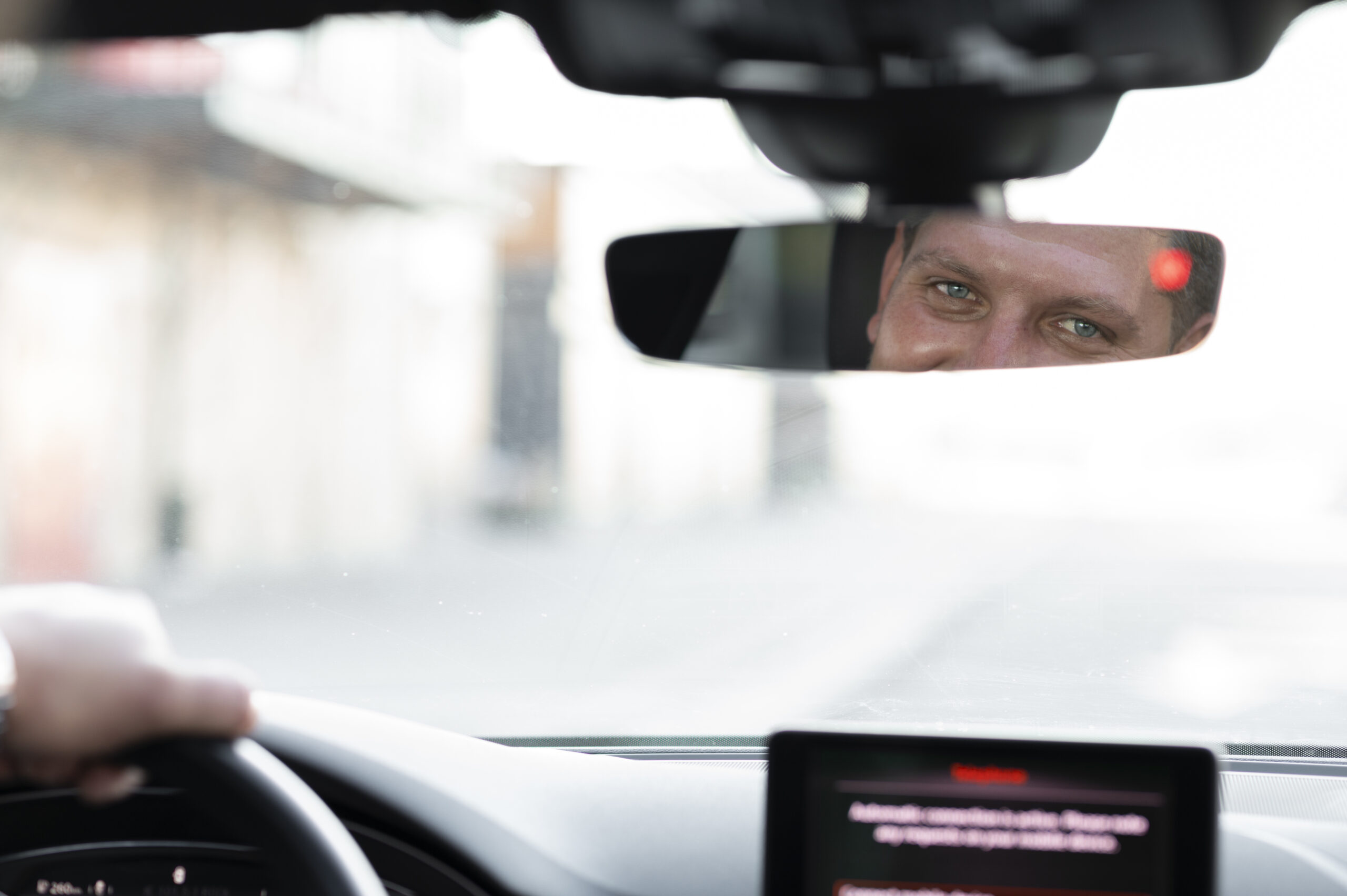Modern technology has brought significant advancements to vehicle safety and convenience, and one such innovation is the rear view mirror camera. This device combines the functionality of a traditional rear view mirror with the added benefit of a high-definition camera, providing drivers with a clearer, wider, and safer view of the road behind them. This article will explore how rear view mirror cameras work, their benefits, different types, installation tips, and how they can enhance your driving experience.
How Rear View Mirror Cameras Work
Rear view mirror cameras, also known as mirror dash cams or mirror cameras, are designed to replace or augment your standard rear view mirror with an integrated video display. Here’s a breakdown of how these devices function:
1. Camera Integration
The primary component of a rear view mirror camera is a high-definition camera mounted at the rear of the vehicle. This camera continuously captures video footage of the area behind the car, providing real-time visual feedback to the driver.
2. Digital Display
The captured video footage is transmitted to a digital display embedded in the rear view mirror. This display can either replace the traditional mirror entirely or overlay the video feed onto the reflective surface, allowing the driver to switch between the standard mirror view and the camera feed as needed.
3. Wide-Angle View
Most rear view mirror cameras offer a wide-angle view, significantly expanding the driver’s field of vision compared to traditional mirrors. This helps eliminate blind spots and provides a clearer picture of what’s happening behind the vehicle.
4. Recording Capabilities
Many rear view mirror cameras double as dash cams, recording video footage of the road behind (and often the front) of the vehicle. These recordings can be useful for reviewing incidents, providing evidence in case of accidents, or even monitoring parking.
5. Advanced Features
High-end models may include features such as night vision, motion detection, parking mode, GPS integration, and lane departure warnings. These enhancements further improve safety and convenience.
Benefits of Using a Rear View Mirror Camera
Integrating a rear view mirror camera into your vehicle offers numerous advantages, enhancing both safety and convenience.
1. Improved Rear Visibility
The wide-angle view provided by the rear camera offers a significantly larger field of vision than a standard rear view mirror. This reduces blind spots and allows you to see more of the road and surroundings, improving safety during reversing, lane changes, and parking.
2. Enhanced Safety
With clearer visibility, drivers can make better-informed decisions, reducing the risk of collisions and accidents. The ability to record footage also provides valuable evidence in case of incidents, which can be crucial for insurance claims and legal matters.
3. Ease of Parking
Rear view mirror cameras make parking easier and safer by providing a clear view of obstacles and other vehicles behind you. This is especially helpful in tight parking spaces and during parallel parking.
4. Night Vision Capability
Many rear view mirror cameras come equipped with night vision, ensuring clear visibility even in low-light conditions. This feature enhances safety when driving at night or in poorly lit areas.
5. Real-Time Recording
The continuous recording feature of many rear view mirror cameras acts as a surveillance tool, capturing everything that happens on the road. This can be valuable for reviewing driving habits, monitoring your vehicle when parked, and providing evidence in case of accidents.
6. Discreet Design
Unlike traditional dash cams that are mounted on the windshield or dashboard, rear view mirror cameras are discreet and unobtrusive. They blend seamlessly with the interior of the vehicle, providing enhanced functionality without cluttering the driver’s view.
Types of Rear View Mirror Cameras
Rear view mirror cameras come in various types and configurations, each offering unique features and benefits. Here are some common types:
1. Single-Lens Rear View Mirror Cameras
These cameras focus solely on the rear view, providing a clear and wide-angle view of the road behind the vehicle. They are ideal for drivers who primarily need enhanced visibility for reversing and parking.
2. Dual-Lens Rear View Mirror Cameras
Dual-lens models feature both front and rear cameras, offering comprehensive coverage of the road ahead and behind. This dual functionality makes them a popular choice for those seeking all-around protection and recording.
3. Touchscreen Rear View Mirror Cameras
Equipped with a touchscreen interface, these cameras allow for easy operation and settings adjustments. The touchscreen display can switch between different views and provide access to various features with a simple tap.
4. GPS-Integrated Rear View Mirror Cameras
GPS integration adds an extra layer of functionality, recording the vehicle’s location and speed along with the video footage. This can be useful for navigation, tracking routes, and providing additional evidence in case of incidents.
5. Wi-Fi-Enabled Rear View Mirror Cameras
Wi-Fi-enabled models allow for easy transfer and viewing of recorded footage on smartphones and other devices. This feature is convenient for quickly sharing videos and accessing camera settings remotely.
How to Choose the Right Rear View Mirror Camera
Selecting the right rear view mirror camera involves considering various factors to ensure it meets your specific needs and preferences.
1. Camera Quality
Look for a camera with high-resolution video quality, preferably Full HD (1080p) or higher. This ensures clear and detailed footage, which is crucial for identifying details such as license plates and road signs.
2. Field of View
A wide-angle lens provides a broader field of view, reducing blind spots and enhancing overall visibility. Choose a camera with at least a 120-degree field of view for optimal coverage.
3. Night Vision
Ensure the camera has good night vision capabilities. Infrared LEDs and low-light sensors can significantly improve visibility in dark conditions, enhancing safety during nighttime driving.
4. Recording Features
Consider a camera with continuous recording, loop recording, and G-sensor activation. These features ensure that the camera captures all important events and automatically saves footage during collisions.
5. Storage Capacity
Check the storage options available. Most rear view mirror cameras use microSD cards for storage, so look for models that support high-capacity cards (64GB or higher) to ensure ample recording space.
6. Ease of Installation
Choose a camera that is easy to install and fits securely onto your existing rear view mirror. Some models come with straps or clips, while others may require more permanent mounting solutions.
7. User Interface
A user-friendly interface is essential for easy operation and settings adjustments. Touchscreen models are particularly convenient, allowing for quick access to different views and features.
Installation Tips for Rear View Mirror Cameras
Proper installation of your rear view mirror camera is crucial for optimal performance. Here are some tips to help you install and set up your camera effectively:
1. Read the Manual
Start by reading the installation manual provided by the manufacturer. This will give you a clear understanding of the steps involved and any specific requirements for your camera model.
2. Position the Camera Correctly
Ensure that the rear camera is positioned correctly to capture the best view. The camera should be mounted at the rear of the vehicle, typically above the license plate or on the rear windshield.
3. Secure the Wiring
When running cables from the camera to the rear view mirror, secure the wiring along the edges of the vehicle’s interior. Use cable clips or adhesive strips to keep the wires tidy and prevent them from interfering with your driving.
4. Test the Setup
After installation, test the setup to ensure everything is working correctly. Check the camera’s field of view, adjust the angle if necessary, and verify that the video feed is clear and stable.
5. Regular Maintenance
Perform regular maintenance checks on your camera and related components to ensure they continue to function properly. Clean the camera lens regularly to maintain clear visibility and inspect the wiring for any signs of wear or damage.
How Rear View Mirror Cameras Enhance Safety and Convenience
Rear view mirror cameras not only enhance visibility but also contribute to overall driving safety and convenience. Here’s how:
1. Accident Prevention
The improved visibility provided by rear view mirror cameras helps prevent accidents by eliminating blind spots and providing a clear view of the road behind. This is particularly useful during lane changes, reversing, and parking.
2. Parking Assistance
Rear view mirror cameras make parking easier by providing a clear view of obstacles and other vehicles behind you. This reduces the risk of collisions and makes parking in tight spaces less stressful.
3. Surveillance and Security
The continuous recording feature acts as a surveillance tool, capturing everything that happens on the road. This can be valuable for monitoring your vehicle when parked and providing evidence in case of theft or vandalism.
4. Night Driving Safety
With night vision capabilities, rear view mirror cameras ensure clear visibility even in low-light conditions. This enhances safety when driving at night or in poorly lit areas.
5. Evidence Collection
In case of accidents or disputes, the recorded footage provides valuable evidence that can help determine fault and protect you legally. This can be crucial for insurance claims and legal matters.
Conclusion
Rear view mirror cameras are a powerful tool for enhancing your driving experience. By providing improved visibility, enhanced safety features, and the convenience of real-time recording, these devices offer significant benefits over traditional rear view mirrors. Choosing the right rear view mirror camera involves considering factors such as camera quality, field of view, night vision, recording features, and ease of installation. With the right camera in place, you can enjoy a safer, more convenient, and stress-free driving experience. Invest in a quality rear view mirror camera to revolutionize the way you drive and ensure the safety of yourself and your vehicle.








